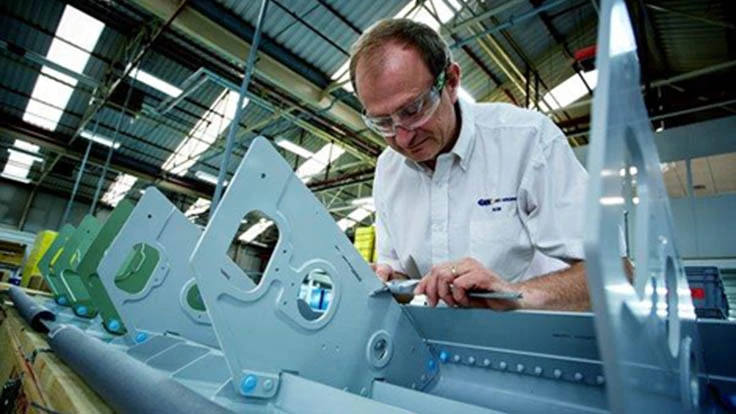
GKN Aerospace innovative wing leading edge assemblies, delivered to Airbus for the Clean Sky BLADE program.
London – GKN Aerospace has delivered innovative wing components as part of a major research program to test and measure the benefits of natural laminar flow (NLF) designs during trials on the wing of a flight test aircraft. The Breakthrough Laminar Aircraft Demonstrator in Europe (BLADE) project is part of the Clean Sky Smart Fixed Wing Aircraft (SWFA) program, an extensive, 50% European Union-funded, multi-partner activity aimed at lowering fuel consumption and emissions by reducing aircraft drag. GKN Aerospace is a strategic partner for the full duration of the Clean Sky program.
GKN Aerospace has delivered the critical leading edge assemblies and upper covers that form part of the NLF wing section on the starboard wing of the Airbus A340 flight test aircraft. These innovative structures offer NLF levels of performance through the adoption, by GKN Aerospace, of a totally new design approach and the application of novel manufacturing technologies that deliver the ultra-high tolerances and exceptional surface finish required.
During flight tests to take place in 2017, this wing section will be used to test the performance characteristics of NLF wing architecture, helping prove predicted economic and environmental benefits. An NLF wing is expected to reduce wing drag by 8% and improve fuel consumption by nearly 5%.
Russ Dunn, Senior Vice President, Engineering and Technology at GKN Aerospace explains: “The SFWA BLADE program is allowing us to progress innovative technologies, concepts, and capabilities with the potential to bring about a step-change in aircraft fuel consumption.”
Dunn continues: “The key challenge with designing and manufacturing an NLF wing, with the many aerodynamic benefits that promises, stems from the need to tightly control the wing surface. It is vital to eliminate features such as steps, gaps, surface roughness, and waviness or fastener heads as these all lead to more traditional turbulent-flow performance levels. The GKN Aerospace team has created these integrated, co-cured composite upper covers and very high tolerance leading edge surfaces using the same structured design and development process applied in commercial aircraft programs. As a result, our first part was of very high quality and has been delivered for the flight test program – which for such an innovative structure was a huge achievement for the entire team.”
Source: GKN Aerospace
Latest from Aerospace Manufacturing and Design
- Daher inaugurates Fly'in technology center
- Baumer's ultra compact sensors
- Trelleborg Sealing Solutions acquires Magee Plastics
- Edge Technologies' FMB Turbo 3-38 RS
- A new chapter for Zagar
- Thomson' encoder option to stepper motor linear actuator online selection tool
- Look into the future of manufacturing in roundtable webinar
- Start the new year off right – get up to date with the additive manufacturing industry





